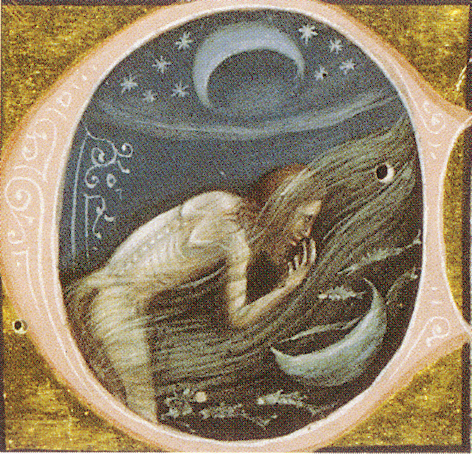|
Cupid And Psyche (Gérard)
''Cupid and Psyche'' (or ''Allegory of Eros and Psyche'') is an oil-on-canvas painting by French painter François Gérard, from 1798. It was exhibited for the first time at the Salon of 1798. It is held in the Louvre, in Paris. History and description The scene takes place in a green landscape, which serves as the background for the action. The young princess Psyche is depicted here as being somewhat surprised by the first kiss she is receiving from Cupid (or Eros), which remains invisible to her eyes. The ancient myth told here is not only a love story, but also a metaphysical allegory: Psyche is in fact the personification of the human soul, related to the overwhelming passion, and to the libido. This work created by Gérard, who had been a pupil of Jacques-Louis David, testifies the evolution of his neoclassical style. The relationship depicted in this painting between Cupid and Psyche is inspired by the narrative of the Latin poet Apuleius in ''The Golden Ass The ''Met ... [...More Info...] [...Related Items...] OR: [Wikipedia] [Google] [Baidu] |
François Gérard
François Pascal Simon Gérard (, 4 May 1770 – 11 January 1837), titled as Baron Gérard in 1809, was a French painter. He was born in Rome, where his father occupied a post in the house of the French ambassador, and his mother was Italian. After he was made a baron of the Empire in 1809 by Emperor Napoleon, he was known formally as Baron Gérard. Life and career François Gérard was born in Rome to J. S. Gérard and Cleria Matteï. Henri Gérard 1888 At the age of twelve, Gérard obtained admission into the ''Pension du Roi'' in Paris. From the ''Pension'', he passed to the studio of the sculptor Augustin Pajou, which he left at the end of two years for the studio of the history painter Nicolas-Guy Brenet,Nicolas-Guy Brenet (1728–1792), professor at the Académie royale de peinture et de sculpture, 1778. Michael Bryan, ''Dictionary of Painters and Engravers'', ''s.v.'' "Brenet, Nicolas Guy". Brenet was also the master of Jean Germain Drouais. whom he quit almost imme ... [...More Info...] [...Related Items...] OR: [Wikipedia] [Google] [Baidu] |
The Golden Ass
The ''Metamorphoses'' of Apuleius, which Augustine of Hippo referred to as ''The Golden Ass'' (Latin: ''Asinus aureus''), is the only ancient Roman novel in Latin to survive in its entirety. The protagonist of the novel is Lucius. At the end of the novel, he is revealed to be from Madauros, Madaurus, the hometown of Apuleius himself. The plot revolves around the protagonist's curiosity (''curiositas'') and insatiable desire to see and practice magic. While trying to perform a spell to transform into a bird, he is accidentally transformed into an donkey, ass. This leads to a long journey, literal and metaphorical, filled with The Golden Ass#Inset stories, inset tales. He finally finds salvation through the intervention of the goddess Isis, whose cult he joins. Origin The date of composition of the ''Metamorphoses'' is uncertain. It has variously been considered by scholars as a youthful work preceding Apuleius' ''Apology'' of 158–159, or as the climax of his literary career, an ... [...More Info...] [...Related Items...] OR: [Wikipedia] [Google] [Baidu] |
Nude Paintings Of Women
Nudity is the state of being in which a human is without clothing. While estimates vary, for the first 90,000 years of pre-history, anatomically modern humans were naked, having lost their body hair, living in hospitable climates, and not having developed the crafts needed to make clothing. As humans became behaviorally modern, body adornments such as jewelry, tattoos, body paint and scarification became part of non-verbal communications, indicating a person's social and individual characteristics. Indigenous peoples in warm climates used clothing for decorative, symbolic or ceremonial purposes but were often nude, having neither the need to protect the body from the elements nor any conception of nakedness being shameful. In many societies, both ancient and contemporary, children might be naked until the beginning of puberty. Women may not cover their breasts due to the association with nursing babies more than with sexuality. In the ancient civilizations of the Med ... [...More Info...] [...Related Items...] OR: [Wikipedia] [Google] [Baidu] |
Nude Paintings Of Men
Nudity is the state of being in which a human is without clothing. While estimates vary, for the first 90,000 years of pre-history, anatomically modern humans were naked, having lost their body hair, living in hospitable climates, and not having developed the crafts needed to make clothing. As humans became behaviorally modern, body adornments such as jewelry, tattoos, body paint and scarification became part of non-verbal communications, indicating a person's social and individual characteristics. Indigenous peoples in warm climates used clothing for decorative, symbolic or ceremonial purposes but were often nude, having neither the need to protect the body from the elements nor any conception of nakedness being shameful. In many societies, both ancient and contemporary, children might be naked until the beginning of puberty. Women may not cover their breasts due to the association with nursing babies more than with sexuality. In the ancient civilizations of the Medite ... [...More Info...] [...Related Items...] OR: [Wikipedia] [Google] [Baidu] |


